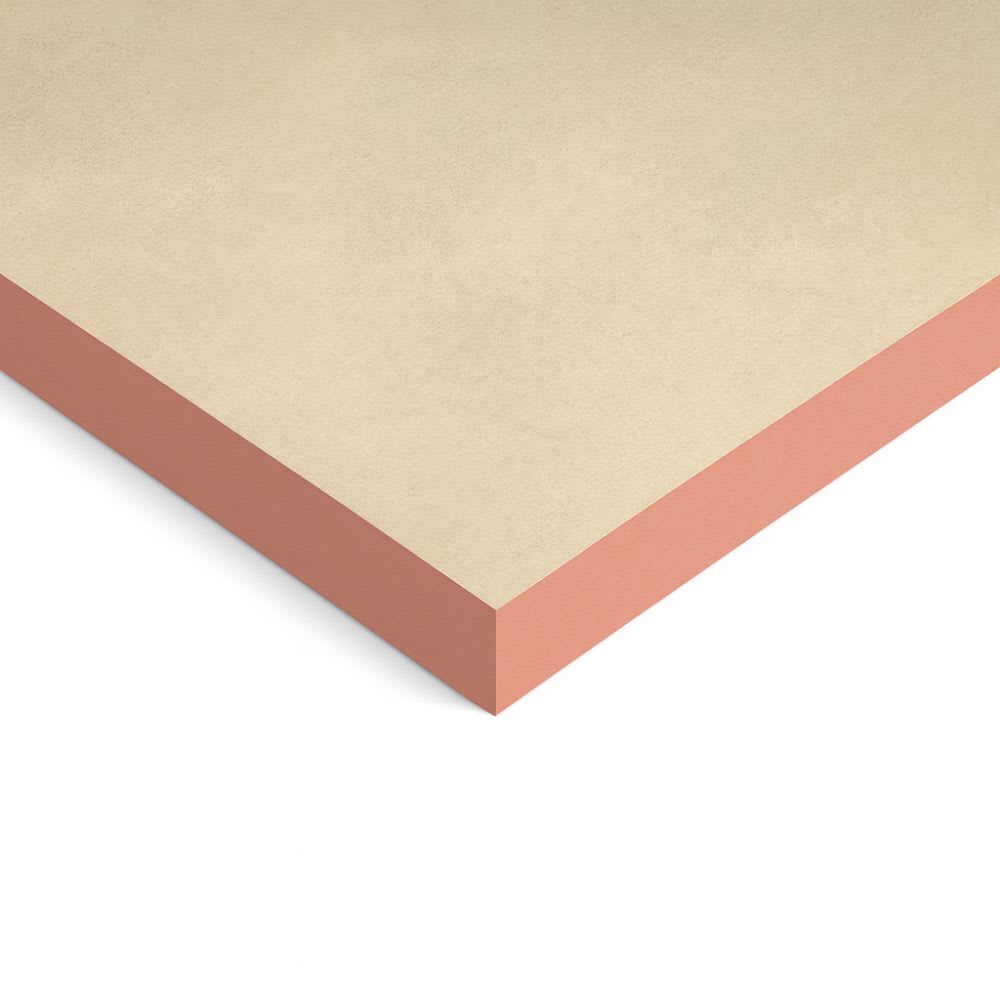Kingspan K103 Kooltherm
(11 Products)Kingspan Kooltherm K103 Floorboard is an advanced floor insulation solution purposed for use in a variety of floor buildups, including insulating beam and block concrete floors. The boards comprise a fibre-free rigid thermoset core sandwiched between autohesively bonded glass tissue facings; their impressively low thermal conductivity of 0.018 W/mK comes as a result of this phenolic insulation core- making them the most thermally efficient insulant on the market.
Kingspan K103 Kooltherm Applications
Kingspan Kooltherm K103 Floorboard is a premium designed insulation for installation under floors.
With a compressive strength above 120 kPa at 10% compression, K103 retains its effectiveness even under heavy floors.
Applications:
- Solid concrete floor slabs
- Screed
- Suspended timber floors
Please note - Kingspan Kooltherm K3 insulation board should not be in direct contact with subsoil and should always be installed over a separate damp proof membrane with a minimum gauge of 1200).
Kingspan K103 Kooltherm Specifications
When it comes to rigid thermoset insulation materials, Kingspan K103 is the best of the best.
Purposed to insulate beam and block concrete and suspended timber floor applications, K103 stands as the highest-performing thermal insulation solution on the market.
When you invest in quality, you also invest in longevity; on top of its many triumph features, K103 boasts an indefinite life. This, of course, will depend on the supporting structure as well as the correct installation of the boards.
We stock a range of thicknesses to suit every insulation need. You can choose from boards between 25mm and 150mm.
Let's check the specs:
- Unaffected by air infiltration
- Non-deleterious material
- Resistant to the passage of water vapour
- Can reduce the cost of related items – soil removal, service connections
- Manufactured with a blowing agent that has zero Ozone Depletion Potential (ODP) and low Global Warming Potential (GWP)
Kingspan K103 Kooltherm Certifications
- Fire Rating (Reaction to Fire) - Euroclass: C-s2,d0
- Covered by BBA Certificate 16/5299
- Green Guide Rating A+
Kingspan Kooltherm K103 Floorboard is manufactured under a management system certified to:
- ISO 9001: 2015 (Quality Management Systems. Requirements)
- ISO 14001: 2015 (Environmental Management Systems. Requirements)
- ISO 45001: 2018 (Occupational Health and Safety Management Systems. Requirements with guidance for use)
How Is Rigid Phenolic Insulation Made?
To make phenolic insulation boards, Kingspan applies a layer of wet phenolic directly onto a facing. The plastic foam forms an insulating core and expands to meet the top layer, achieving the desired thickness.
When phenolic dries, it becomes tacky. It adheres to the top and bottom facings to create thin sheet material.
Kingspan cooks the resulting board under immense heat, then cures it in a second oven. Cooked and cured phenolic is a distinct pink colour, which is distinguishable from yellow PIR foam.
The boards have very low thermal conductivity and provide the best thermal protection that you can buy. They can also withstand continuous temperatures of up to 120 degrees C, making them the ideal choice for high-specification projects
Frequently Asked Kingspan K103 Questions
Is Phenolic Insulation Waterproof?
Phenolic insulation has a 95% closed cell content endowing it with excellent moisture resistance. Additionally, phenolic insulation has a low water vapour permeance and is non-wicking.
If water does manage to enter the system due to a puncture in the board, any moisture ingress is limited only to the punctured area. This ensures that moisture does not build up and compromise the entire system.
Is Phenolic Insulation Fireproof?
Phenolic insulation offers excellent fire performance with low flame spread and smoke emission. Due to the fact that it is a thermoset material (as opposed to thermoplastic) it solidifies and chars in the presence of fire, emitting very little smoke as a result.
The aforementioned material, thermoplastic, liquifies in high-heat, producing thick plumes of smoke.
While phenolic insulation is not completely fireproof, it can withstand temperatures up to 120C without melting or burning. This makes it an ideal material for use in high-heat environments.
What's The Difference Between PIR & Phenolic Insulation?
Phenolic and polyisocyanurate (PIR) are two types of rigid foam insulation. Both are made with a closed-cell structure, meaning that they are composed of cells that do not allow air or water to pass through them.
This makes them both excellent choices for insulation as they are both moisture-resistant and highly thermally efficient However, there are some key differences between the two types of foam.
Phenolic foam showcases a slightly thinner profile than PIR whilst exhibiting higher R-value and fire performance.
PIR, on the other hand, combines low cost and high thermal efficiency, making it the ideal choice for the cost-cautious buyer.
However, for those looking for premium performance, phenolic foam's somewhat better thermal performance justifies its dearer pricing, offering the thinnest insulation solutions for a given specific u-value.

